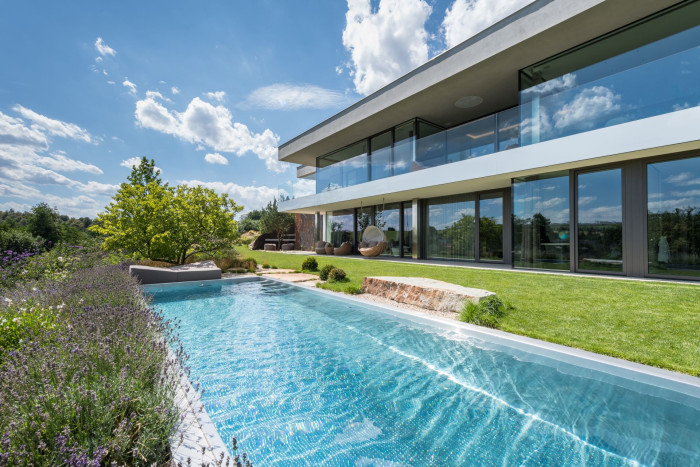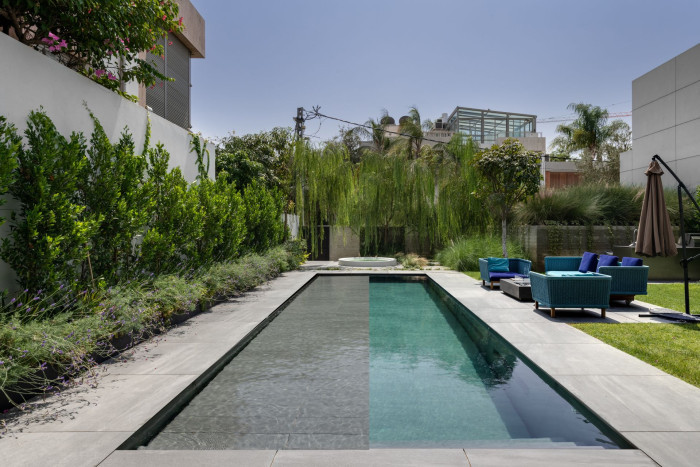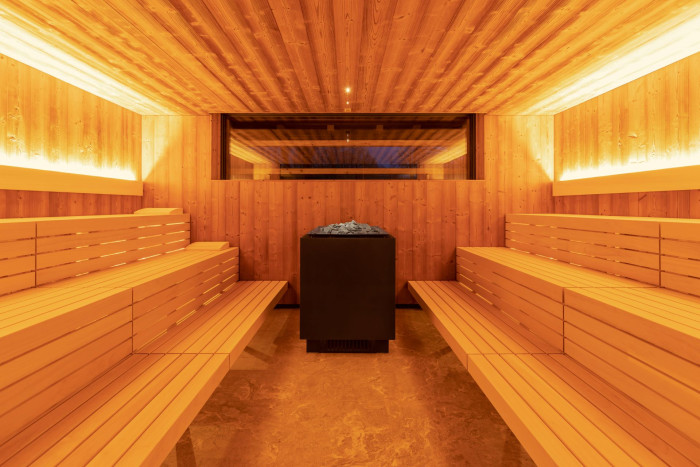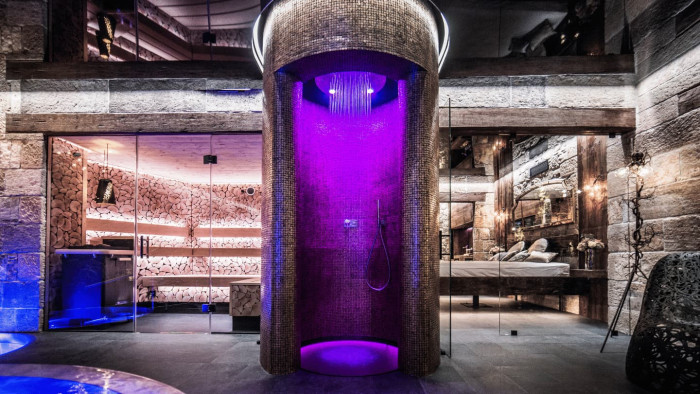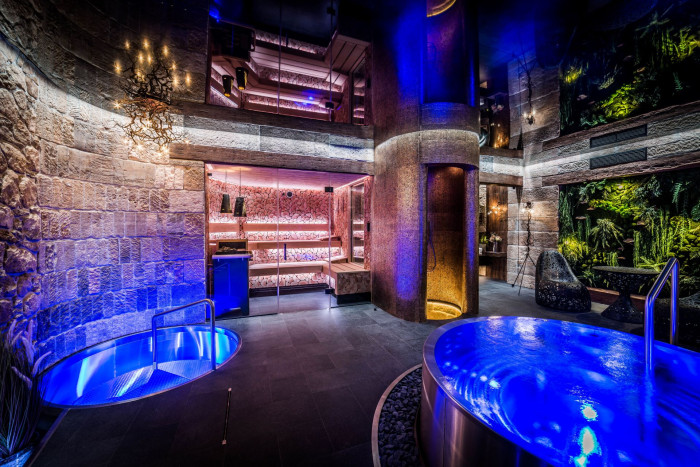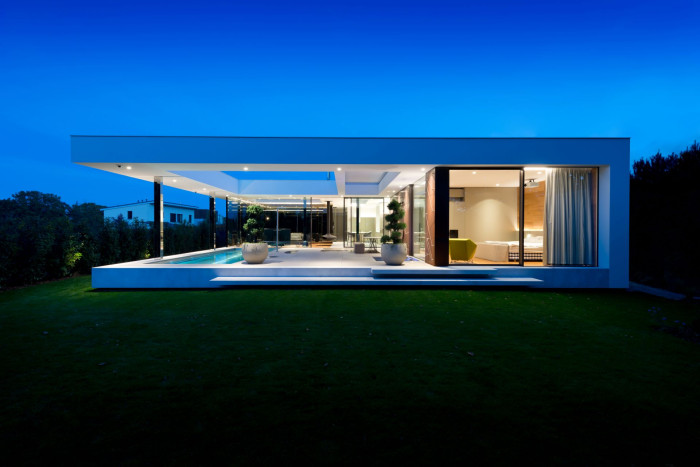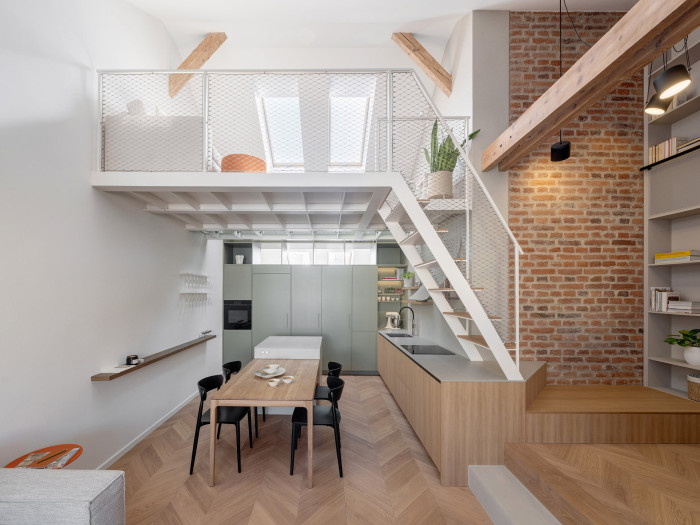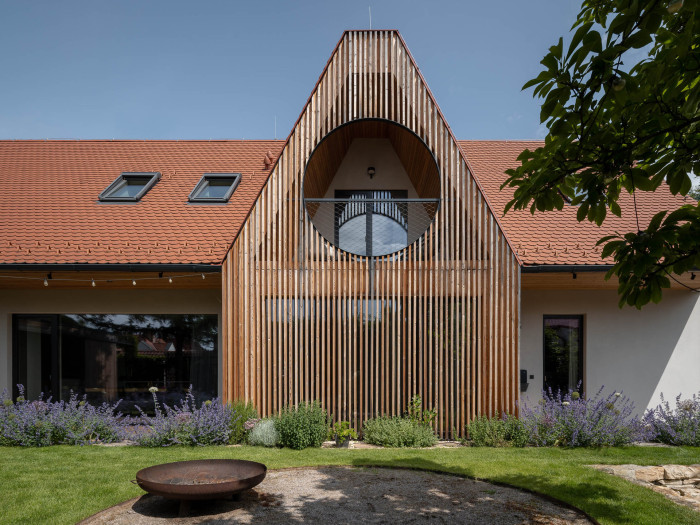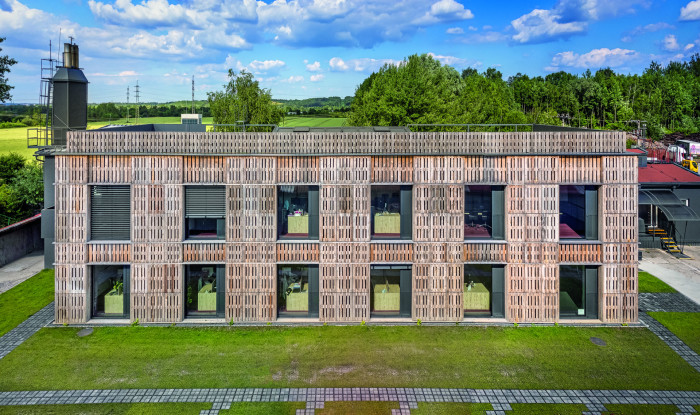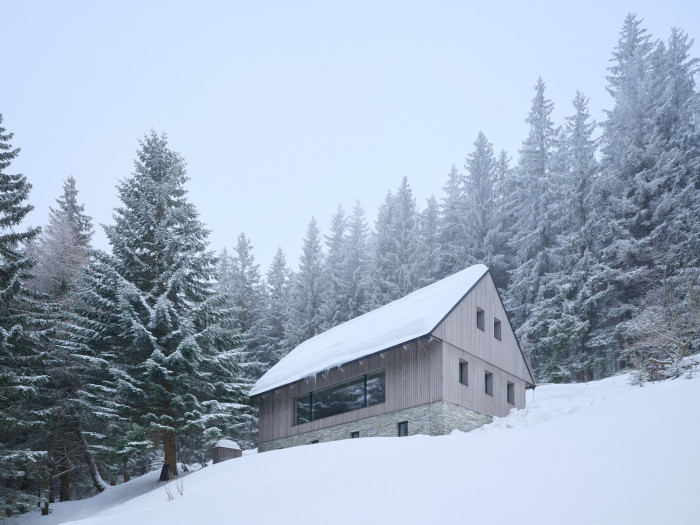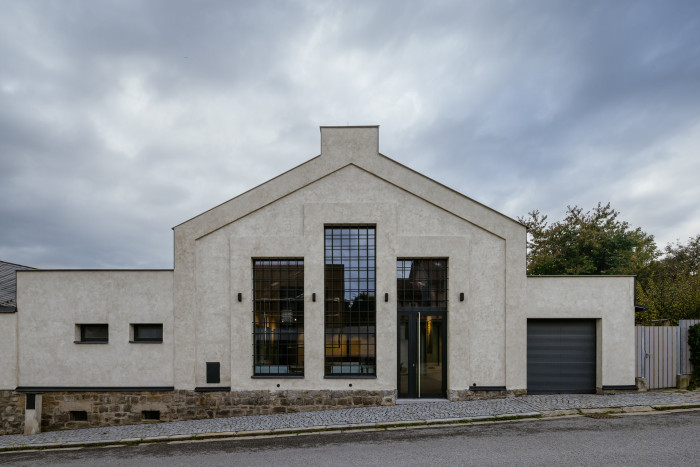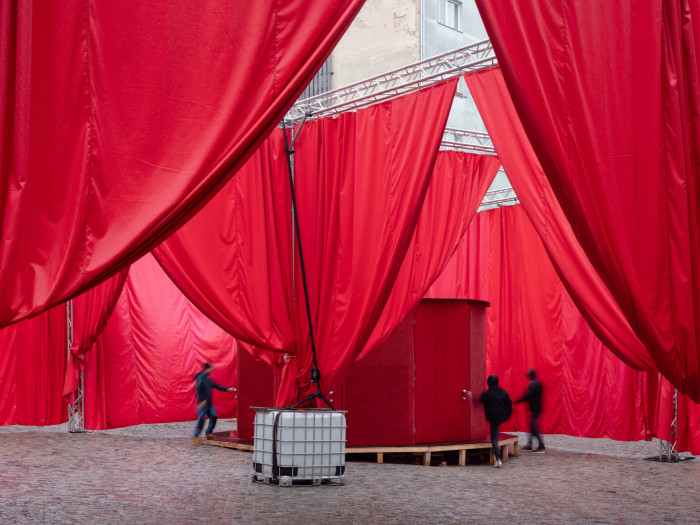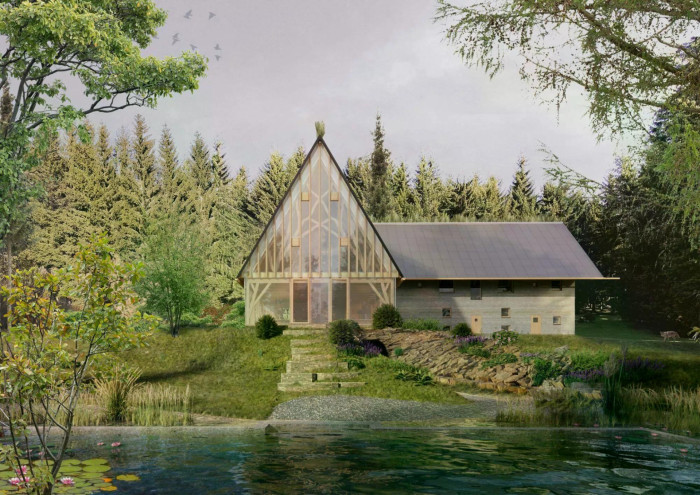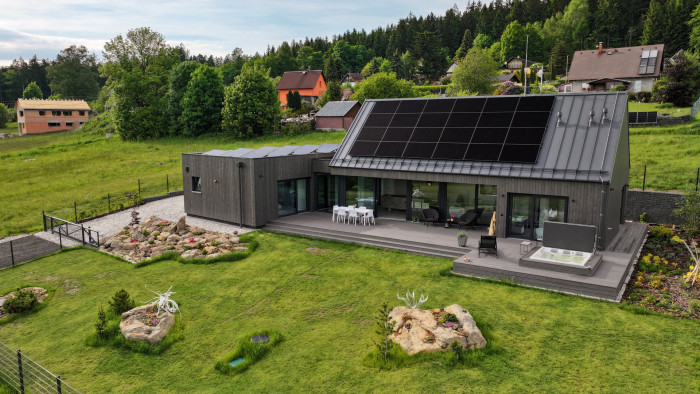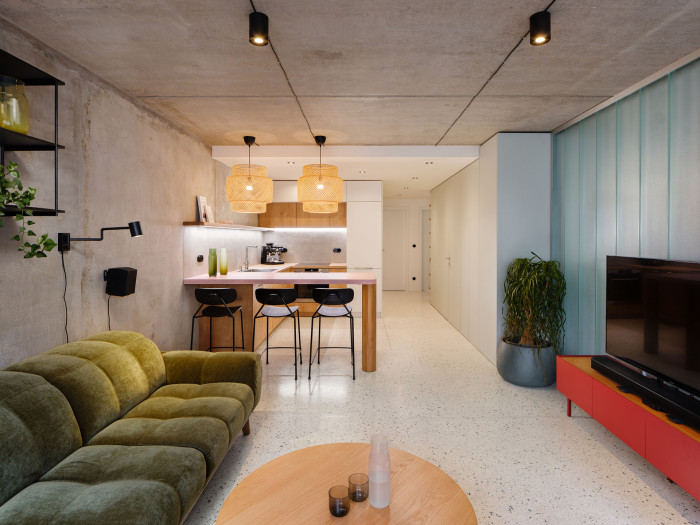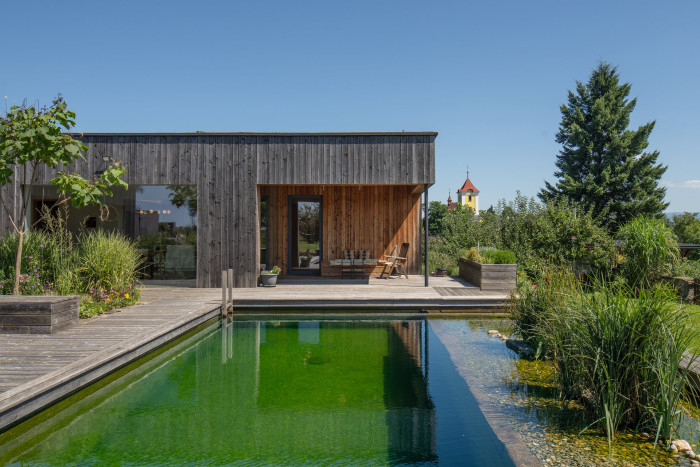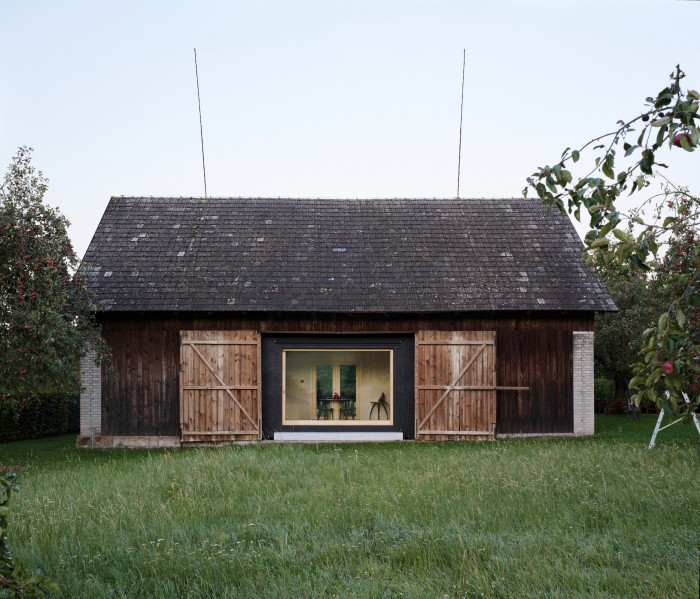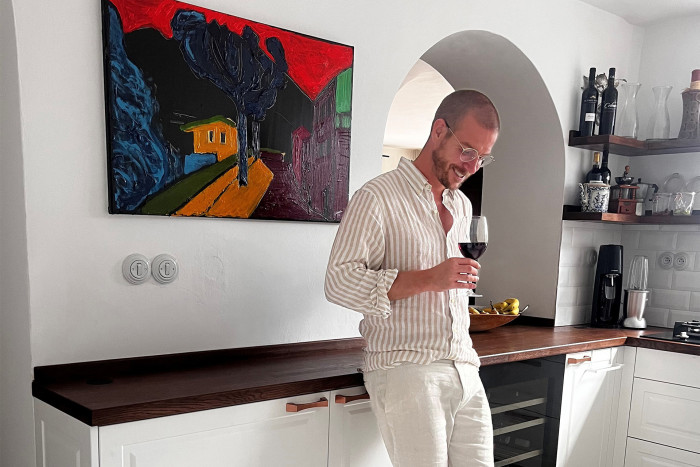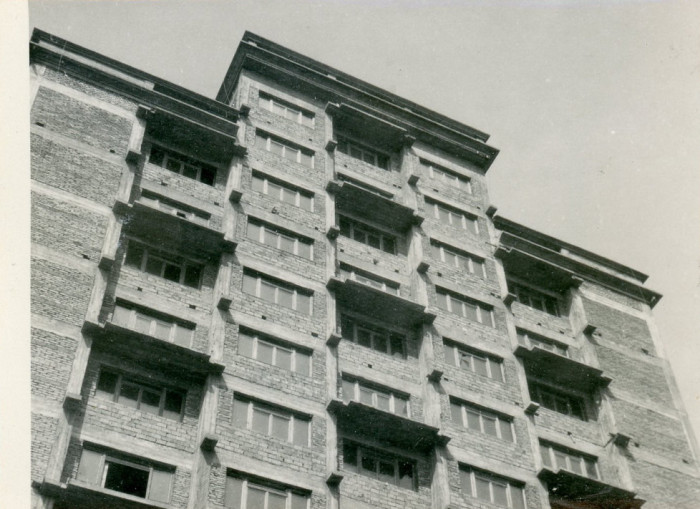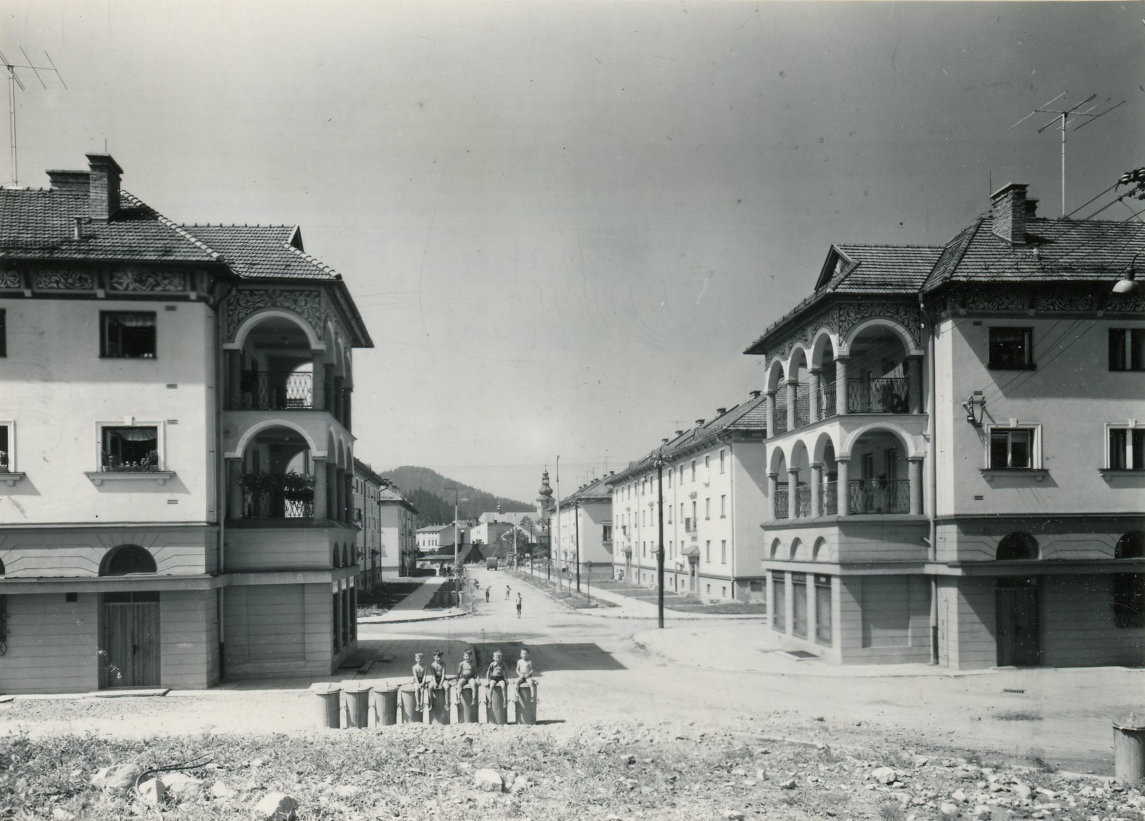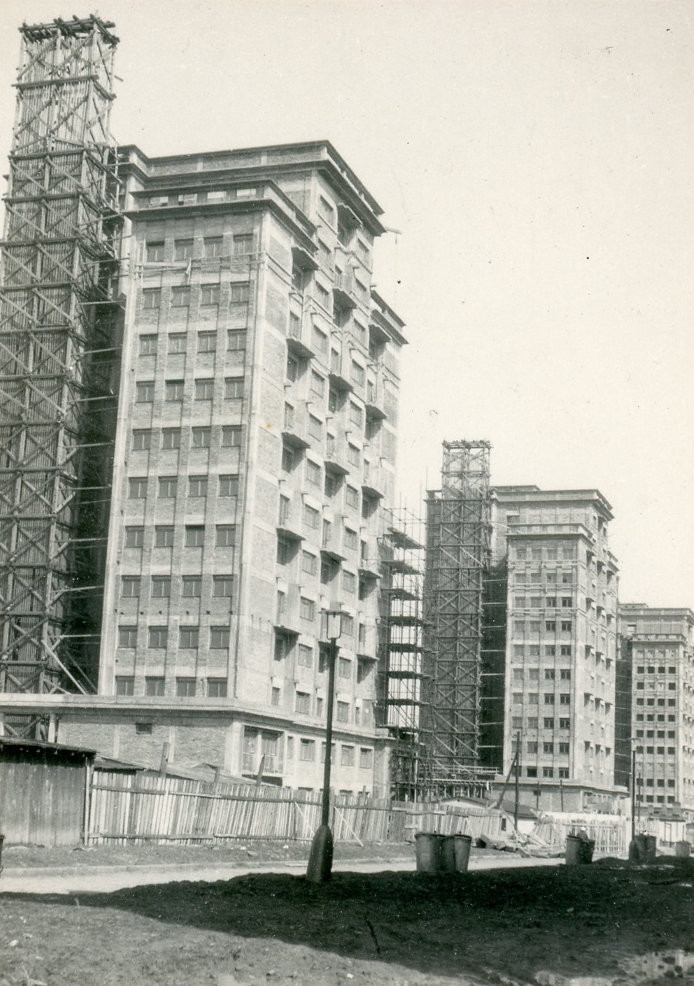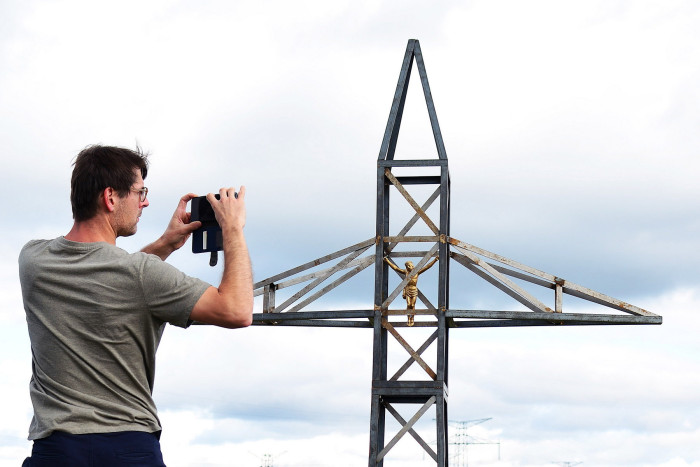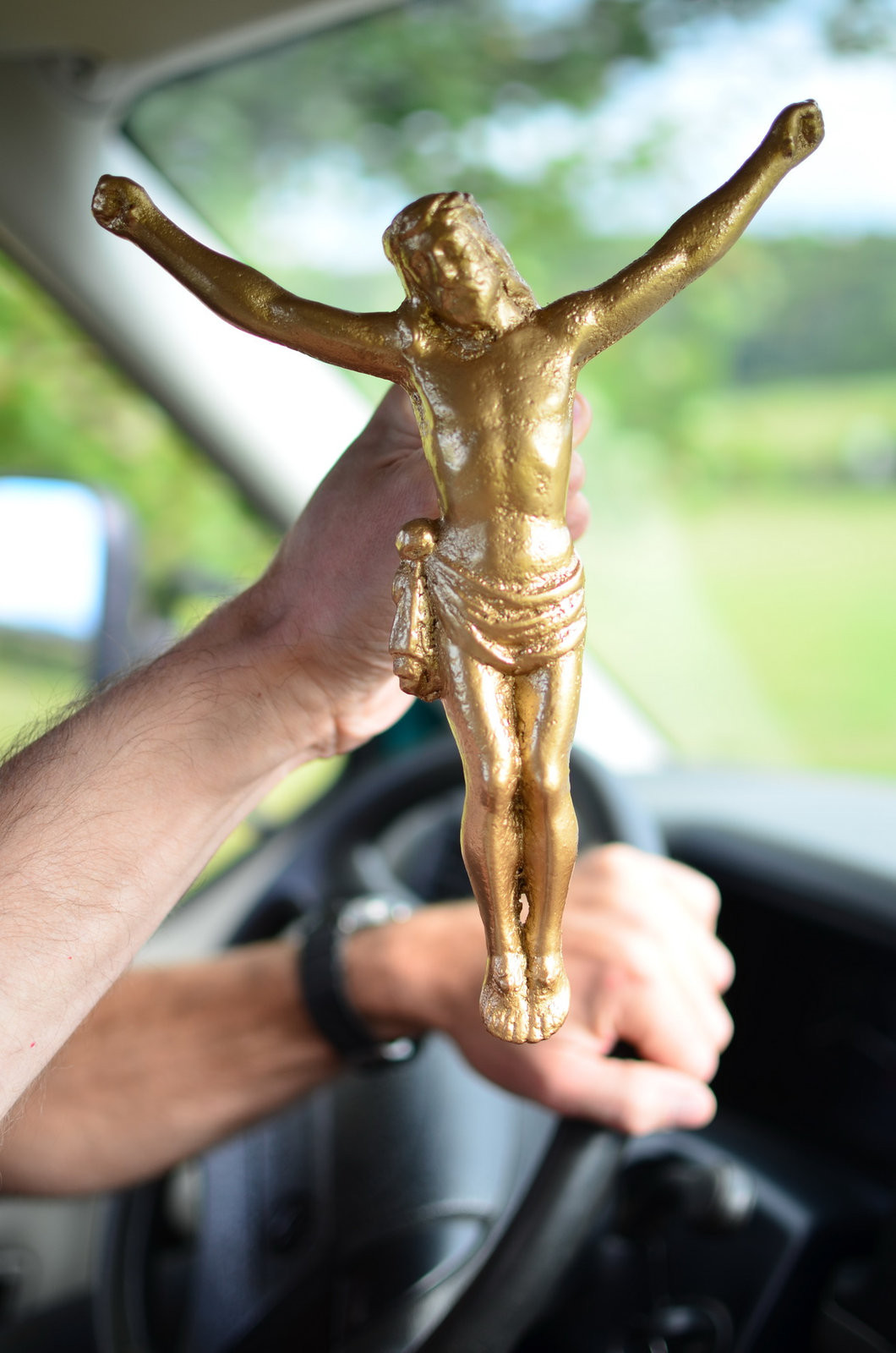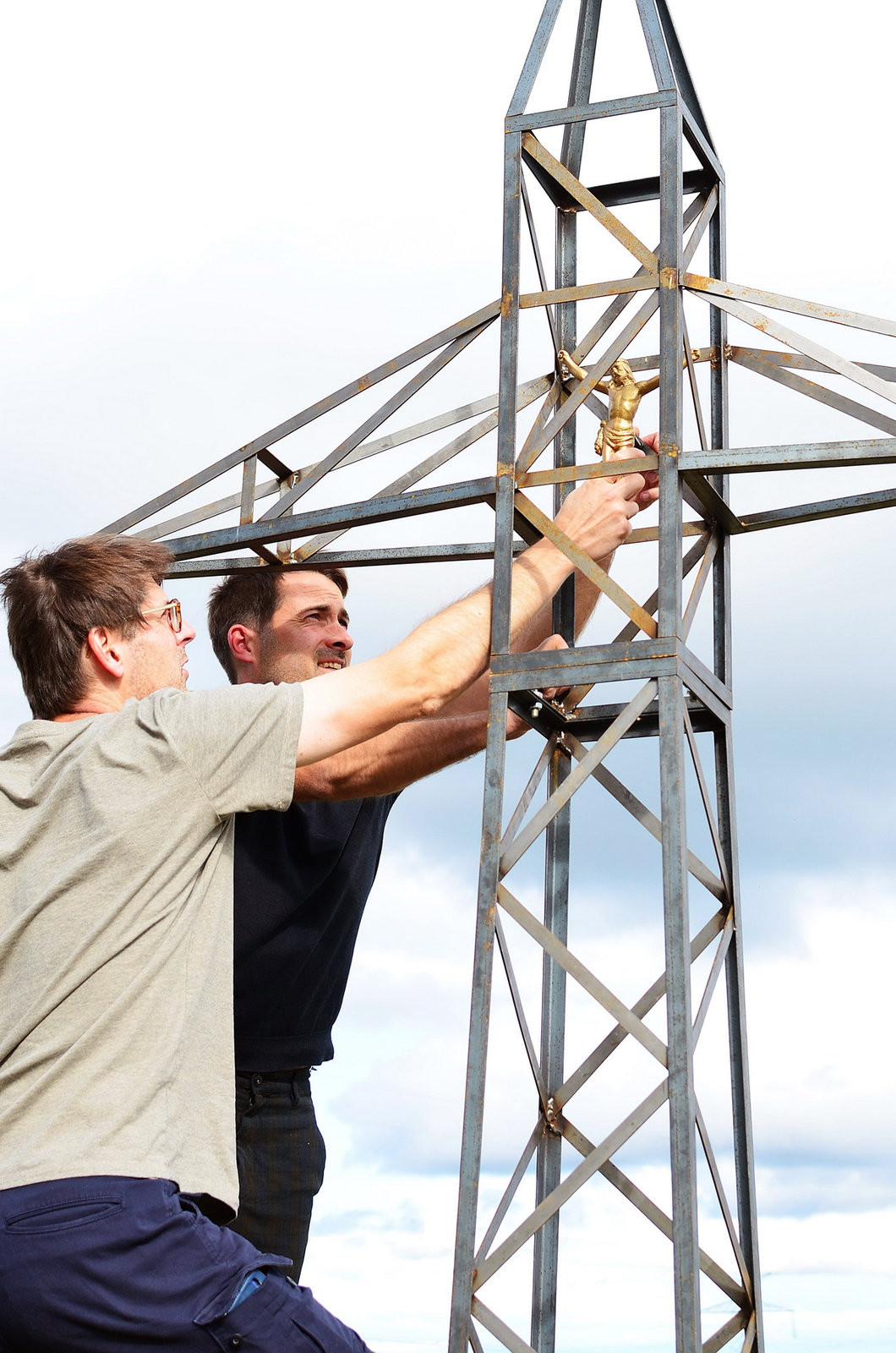Interview | Nathaniel KAHN
The following is an interview by Martin C. Pedersen with the director Nathaniel Kahn from Metropolis Magazine (June 2003).
EARCH.CZ , 27. 10. 2005
Obviously the search for your father has been a lifelong quest. But what happened in your immediate past that made you want to make this film now? I think you get to a point where your curiosity gets the better of you. As a little boy, I didn't see much of my father's world--I just had a key hole-size glimpse of it. But what I saw of it was fascinating. You also want to know about the man who came before you. I'd made other films, but this is something that I had avoided for a long time, because it's scary to go back. You don't know what you're going to find. There's always the risk of embarrassing yourself: here comes what appears to be a nearly middle-aged man asking questions that a child asks. That was difficult.Was it the sort of film you always knew you were going to make but kept putting off? No, I kept trying to do it in other ways. I wrote a screenplay about a son who discovers that the father he thought was dead isn't--which of course was always a dream of mine. It sort of reverberates throughout the film. As a little boy, I never quite believed that Lou was gone. I would always look for him in crowds. I'd see a white-haired man turning the corner and think maybe it was him.Did you always know that you were going to be the main protagonist in the film? No. One of my biggest struggles was: what would the character of the son--me--be like in the documentary? For a long time I tried to ask interview questions that were more objective. But when I got that footage back, I'd look at it and think, "You know what? This is a movie anybody could make."The search for your dad is what propels the story, but if someone goes into the theater not knowing about Louis Kahn, they come out knowing a lot more about his architecture. There was a very fine line to tread there, because the narrative drive of the film is a son looking for his father. But along the way the father happens to be a wellknown architect. I felt that it was important for people to experience what his architecture was like. One of the traps that people who write about architecture often fall into is that they merely describe the buildings as objects. When you experience Lou's architecture, it always gives you a feeling.You have a lot of amazing footage of your father. Where did you find it? The most important source was the Museum of Modern Art. They have a collection of films shot by Hans Namuth and Paul Falkenberg, who did a film about Lou while he was alive. Peter Namuth, Hans's son, and MoMA generously allowed us to use the outtakes.Did you know what was in those films? No. One morning fifty boxes of tape arrived. My producers and I went through the film and put it up on reels. And it was like Christmas morning! Now another kind of filmmaker might look for Lou speaking cogently about architecture. But I was interested in the way he moved, the way he walked, the way he talked, the way he looked confused, things that revealed his personality. I couldn't resist using those shots. We use Lou a lot like a ghost. He's someone who appears and then is gone. So for quite a while you see little glimpses of him, which was always the way I saw him. In a way, the film was like conjuring him, bringing him back from the dead for two hours.There's a scene toward the end of the film that's my favorite piece of footage. The camera pulls through the window. Lou is sitting at the table, drawing. When he folds his hands, we see charcoal all over his fingers. Then the camera pans up to his face. To me that is my father. It is absolutely the salient image for me of Lou. He came from this little island off of Estonia--where his face was badly burned as a small child, where he himself was touched by fire--and his preferred drawing material was charcoal. He never got far away from that visceral feeling of "This is color; I am applying color to a piece of paper."One of the things I liked about the film was that its narrative wasn't literal or strictly chronological. Documentaries that are more subject-based often use people as recurring voices. They interview eight or ten people and then sort of manipulate them. It's a pretty tried and true documentary style--the talking-head film--and it's highly effective intellectually. But I think it's highly ineffective emotionally because on a journey you don't suddenly have someone who you met a year ago pop up and tell you something. There is a unity of time and place. I met Philip Johnson once. All of the scenes with him, all of the moments I could use, were in one place, the Glass House. I met Moshe Safdie in the desert and instead of saying, "Let's find a nice place to hang out, because I want to use you in a lot of different places in the film," he and I took a little walk in the desert. It's one of my favorite scenes because it was literally one take. We had this conversation. It happened one afternoon--and it was gone. That's the way so much of life is. And always the way I thought encounters with my father were.How did your view of your dad's work evolve during the making of the film? I always felt like his buildings were monumental and beautiful, but in a way they seemed rather distant when I first saw them. But as I moved through them—and later filmed them--I felt the tremendous acts of imagination that had gone into making them. I think that he walked through them in his mind. Here was an architect who asked questions, like: what's my building going to be like when it's raining? What's this room going to feel like if I'm sitting in the corner? You can start to think of his buildings as endless acts of imagination. I felt very connected to him by imagining him imagining these places. How did you approach his buildings as a filmmaker? One of the biggest no-nos in filming architecture is panning, because that's just moving the camera. People don't pan when they look at something. They move through space. So the filming that I did early on? I threw all of that out. Honestly, I probably filmed those Yale buildings fifteen times, and I still don't think I've done it right. The moment we got away from the feeling of "we need to show what this building looks like" and instead used the buildings as a stage set, letting people use them as a way to jog their thinking, that was when they became interesting and easier to deal with. For instance, the scene at the capital in Dhaka, when the architect comes up to me at the end of the film. We didn't set that up. He kind of accosted me, wanting to know what I was doing. Yes, I knew the top level of the building would be a great vantage point, but it wasn't, "OK, I want you to stand here; this is a good background." Somehow he was speaking from the building. It was a meeting that the building made happen.That seems to be one of your favorite Kahn buildings. Do you remember seeing it for the first time? Absolutely. We had a number of friends over there who acted as guides for our crew. When we arrived I told one of them, "I want you to take me to the capital, but I don't want to see the building until I can really see it." So the guide said, "Well, why don't we blindfold you?" As we got near the building, I could actually hear the open space around it. The city of Dhaka is insane. There were rickshaws, crazy baby taxis driving all over the place, a sort of constant chaotic bedlam, and then suddenly off to the right there was this silence. They took me out of the car. The ground got soft. We walked over some grass. Then I could hear birds. The traffic was behind us now. Our guide--whose name was also Kahn, spelled K-H-A-N--asked, "Are you ready?" I said, "Not yet. Give me a minute." I prepared myself, realizing, This is the last building of my father's tha I'm going to see for the first time. So in a way I was coming to the end of something too. "Ready?" Khan asked again. "Yes," I said. "Am I facing it?" Khan took off the blindfold and I burst into tears. It was the only time that happened. I've been moved by places before, but seeing that building was so astonishing. It's such an incredible structure. Very pure. Usually it's hard to end a film. But I knew that when I was in Dhaka the film was over. I knew that we were done, there was nowhere else that I could go. And there's something wonderful about that because it's how stories--mythological stories--end. You journey to the end of the earth and find the answer.How long was My Architect in the making? It's been five years. But it's not as if I was obsessed with it for five years. Making a film like this is difficult. It's hard to raise the money, hard to get up every day with the courage to keep asking these questions. You go through periods where you feel that you just can't face it.They say the average documentary takes five years. There are reasons for that. Some of them have to do with funding of course, but a good film gives you the feeling that in two hours you've lived a lifetime. Or lived a day. Or lived through an entire war. Somehow it messes with your sense of time. One of the surest ways to achieve that is to actually produce something that takes place over a period of time. I change within the film and that's part of the reason it takes a while to get going. You have to stick with it. It's a narrative that slowly builds. Westructured it that way. A lot of the film is about untangling the mystery of your father. Now that you've made the film, is he less of a mystery to you? I think so. He's more of a flesh and blood person. Though still enigmatic and mysterious, he's no longer a semi-mythological character. I see that he was a man who had a beginning, a middle, and an end. To some degree the film asks the question: can you get to know someone after they're dead? The answer, I think, is yes.How often did see your father as a child? You couldn't set your watch by Lou. It wasn't: "It's Saturday, the day that Lou comes to dinner." He was very much in my life for the last few years of his life, and very much in my mother's life for many years because they worked together. One of the things that we couldn't get into the film too much was the ways in which she helped him on some of his projects. But I did spend a fair amount of time in his office. His office was kind of like his house. He had this carpet that he rolled out on the floor to sleep on. There was an aspect of him that was very nomadic. In many ways he was as at-home in India and in Bangladesh as he was in Philadelphia.What did you learn about your father that you needed to learn? Richard Saul Wurman said something interesting that I wasn't able to use in the film. "Lou was really here," he said. "You can't say that about everybody." I think the big lesson Ricky got from Lou was: use what you've got, don't give up, and don't look too much at what the guy next door is doing because it's a one way trip. That's a big deal. It's what every son needs to hear, because doing stuff of any value is incredibly hard.How did your mom respond when you told her you were going to make this film? Oh, you'd have to ask her [laughs]. I have great admiration for her. She allowed me to ask tough questions and was very courageous in encouraging me to go my own way, find my own truths and my own answers, which don't necessarily agree with hers.There's one point in the film when she gets visibly angry at your questions. Yes. She says, "Oh, come on!" I think she articulates what a lot of the people might be thinking, but would never say. Which is, "Come on, Nathaniel, get over it! He's been dead a long time. Move on."Have your half-sisters seen the film? Yes. They liked it. But different people see different things in it. That was the enigmatic part of Lou. Each person who knew him knew a slightly different person. Maybe that's true for all of us to some degree.But it was heightened to an incredible degree with your father. Yes, but also heightened by his personality. If he was talking to you, you were the only person on the planet. He had the remarkable ability to focus on something. I remember that even as a little boy. If he was talking you, it wasn't as if he was looking around the room wondering who else was walking in the restaurant. He was talking to you.What do a great architect's buildings reveal about the man? In college people were always saying, "You just need the text. You don't need to know about the writer's life." That was the big movement in the '80s. To my mind that's a load of crap.I think it helps tremendously to know about the person. Critics might want you to think it doesn't matter, because their job is to impose on the work what they see and have that be the truth. But knowing something about where the architect comes from, what they struggled with, helps immensely. I think you can feel something different from a place when you know more about the person who created it. It might not help you understand the building architecturally, but it certainly helps you feel it.Let's talk more about the capital in Bangladesh [National Assembly in Dhaka]. What makes that building special? Until you've see that place, it's very hard to imagine how astonishing it is. When I finally saw it I understood why it was a building that he just had to build. Imagine being asked to build the capital of a country. What a thrilling thing! When I was there I realized how intoxicating it must have been. But I.M. Pei asked me an interesting question about it. "I think the building is amazing," he said, "but I'd like to see how people use it." I realized that when people have photographed it they've always shown it as if it were on the moon, never with the life that goes on around it. So it was important for us to show how people used it, because they do use and love it. So I'm looking forward to answering Mr. Pei's question.Seeing that building for the first time was like realizing that you'd made a pilgrimage and it wasn't a disappointment. It's a building that makes you say "Wow!" And then when you know the story of what it took to build-the 23 years, the stoppage in the middle, the changing of the country during construction. It's a wonderful story: a Jewish architect is brought to a Muslim country, totally immerses himself in their culture and realizes right away that the mosque is very important to them. It's got to be part of the building.Lou was originally told that they wanted to have a 2,000-square-foot mosque, so the people in the building could come and pray. He fell out of bed the next morning and said, "No, the mosque has to be 20,000 feet and it has to be on equal footing with the building." The name "Dhaka" means "city of mosques". The love that developed between the Muslims and this Jewish architect was truly palpable. Somehow there is a give and take that provides a marvelous lesson. Lou really felt that he could make a difference in this new country. His dream was to build cities. He tried in Philadelphia, but failed. It happened in Dhaka.Speaking of Philadelphia, there's an amazing scene in the film with the famous planner, Edmund Bacon. It's a great interview, a great moment. And I love Mr. Bacon for it, because he was truthful about how he felt. He made his points forcefully, intelligently, and it gave me a vision about my father that I don't think I had before--which was how difficult he could be. And I don't think either one of them was wrong. It wasn't about right or wrong. I was interested in why those two people had an antagonistic relationship.After the interview with Bacon you cut away to Kahn's plans for Philadelphia. Where did you get those? Those also came from Museum of Modern Art. What's wonderful about architects is they leave a lot of things behind. So there were artifacts to find and use in the film. The archive at the University of Pennsylvania has thousands of drawings, beautifully cataloged. There are all kinds of things there, like these wonderful plans for Philadelphia.Was that one of those instances where you knew you had these plans, so you arranged an interview with Bacon? No, it was Bacon first. Because I knew that Lou loved the city, knew that this relationship between Bacon and Kahn was important, knew there was a story attached to it.A story about his inability to enter the power structure of his home city? That's one way to see it. I don't make a judgment on that. I think that story is there, but maybe it was also Lou's inability to pick his spots. There are places to be a dreamer and places not to be. For whatever reasons, he wasn't able to be a dreamer in Philly. He was in Dhaka.You've made a deeply emotional film and yet you don't at any point become visibly moved. Why? It's always bad when a character cries, especially the narrator. I cut some of those moments out. When you're the character in your own story, there's always the danger of becoming operatic. That's why finding the voice for the narration was hard. And why it's important to remember that filmmaking-and architecture-is collaborative.There's an incredible producer behind this film, a gifted editor and a talented cameraman whose blood and sweat are all over this film. This is also something I learned from Lou. There were people close to him who not only helped him, but helped the buildings to be what they are. Lou carried the flag and stood out front. But there were a lot of people who went into making those details work. I think we tend to forget that and subscribe to this genius theory of making things.Or to the myth of architectural authorship. When we say it's a "Gehry building" we really mean that there's several dozen people in the Gehry office who helped make it. Absolutely. But I also don't have any illusions about the fact that Gehry is the guy carrying the flag. That's another lesson learned from Lou. He wasn't afraid to carry the damn flag.So it takes courage, but it also takes having the right people around you. Lou was blessed that way. He created a structure, where he would teach at school and find the young people willing to work all night. Another thing I discovered was he was slow. That's been comforting. To learn that it's okay to take a long time to finish something, if you stick with it. It was heartening for me to see how the designs changed up to the last minute, how he was never satisfied. They say a work is never really finished, it's abandoned. It was true for Lou. He was constantly drawing, being convinced of it, and the next day realizing he could do it a better way. It drove people nuts. They'd think: "Let's just build the damn thing already!" but he wasn't ready.How was the narration conceived? Would you sit at a microphone with headphones on in a screening room? Yes. It was very experimental. We'd throw the narration up against the picture and Susan Behr, my producer, or Sabine Krayenbuhl, the editor, would say: "Ah, that's horrible! You can't say that. You're saying too much!" Or: "You're saying too little." "What do you feel about this?" "Are you angry about this?" "You're not telling us anything!" That was where I-the director-needed a helluva' lot of directing. You need a wall to bounce against. The narration was extraordinarily difficult. There are still pieces of it that bother me.I loved the interview in Maine with your two aunts. You could see their emotional shift all in the context of your conversation. It was almost like a feature film. That was one scene. When you get a little experience making these things you start to realize what works. Sometimes it can come down to sitting people at the right place at a table. The big choice here was: do I put myself in the middlebetween my two aunts-or on the side? I sat off to the side and the difference was wonderful, because they're both talking through the camera at me. If I'd been in the middle, I would've been in every shot. In the end, those questions are, oddly, architectural ones. As Billy Wilder always said, "What matters is where you put the camera."






